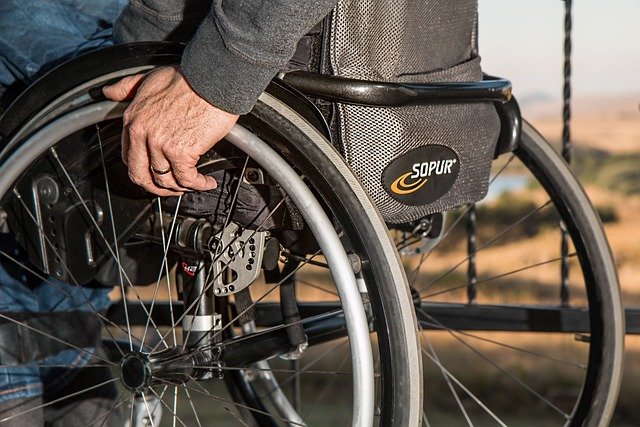Pre-Owned Static Caravans for Sale — Practical Buying Guide
Purchasing a pre-owned static caravan offers an affordable pathway to holiday home ownership or alternative living arrangements. With careful planning and thorough inspection, buyers can find excellent value in the second-hand market. Understanding the key considerations from budget planning to legal requirements ensures a successful purchase that meets both immediate needs and long-term expectations.

The market for pre-owned static caravans presents numerous opportunities for buyers seeking affordable holiday accommodation or permanent alternative housing solutions. Unlike touring caravans, static models remain permanently positioned on designated sites, offering more spacious living areas and enhanced amenities. The second-hand market typically features units ranging from basic models to luxury specifications, with prices significantly lower than new equivalents.
Successful caravan ownership begins with understanding your specific requirements and establishing realistic financial boundaries. Modern static caravans vary considerably in size, layout, and features, making careful needs assessment essential before beginning your search.
Assessing Your Needs and Budget
Determining your intended use significantly influences both caravan selection and budget allocation. Holiday use requires different specifications compared to permanent residence, with considerations including seasonal accessibility, heating systems, and storage requirements. Family size directly impacts layout preferences, with larger units offering separate bedrooms and expanded living areas.
Budget planning extends beyond the initial purchase price to encompass ongoing costs including site fees, insurance, maintenance, and utilities. Establishing a comprehensive budget prevents financial strain and ensures sustainable ownership. Consider allocating additional funds for immediate improvements or repairs that may be required after purchase.
Inspecting Condition: What to Check
Thorough inspection forms the foundation of any successful pre-owned caravan purchase. External examination should focus on structural integrity, checking for signs of water damage, panel deterioration, or foundation settling. Window seals, door frames, and roof condition require particular attention as these areas commonly develop issues over time.
Internal inspection encompasses electrical systems, plumbing functionality, heating efficiency, and appliance condition. Testing all systems during viewing prevents costly surprises after purchase. Documentation of any identified issues provides negotiation leverage and helps prioritize future maintenance requirements.
Ownership, Siting and Legal Considerations
Static caravan ownership involves complex legal arrangements that vary significantly between locations and site types. Understanding the distinction between owning the caravan itself versus site licensing agreements prevents future complications. Many sites operate under license agreements that may include restrictions on occupancy periods, subletting, or resale conditions.
Planning permissions and local authority regulations affect both placement and use of static caravans. Some areas restrict permanent residence while others welcome alternative housing solutions. Researching local regulations before purchase ensures compliance and prevents legal difficulties.
Financing, Insurance and Ongoing Running Costs
Financing options for pre-owned static caravans include personal loans, specialized caravan finance, or cash purchases. Interest rates and terms vary considerably between providers, making comparison shopping essential for securing favorable conditions. Some dealers offer in-house financing arrangements that may provide competitive alternatives to traditional lending.
| Cost Category | Typical Range | Notes |
|---|---|---|
| Purchase Price | £15,000-£80,000 | Varies by age, size, and condition |
| Annual Site Fees | £2,000-£8,000 | Location and amenities dependent |
| Insurance | £200-£600 | Comprehensive coverage recommended |
| Utilities | £800-£2,400 | Seasonal vs permanent use |
| Maintenance | £500-£2,000 | Age and condition dependent |
Prices, rates, or cost estimates mentioned in this article are based on the latest available information but may change over time. Independent research is advised before making financial decisions.
Insurance requirements typically include both the caravan structure and contents coverage. Specialized caravan insurance providers often offer more comprehensive protection compared to standard home insurance extensions. Annual costs depend on caravan value, location, and coverage levels selected.
Where to Find, Compare and Negotiate Deals
The pre-owned static caravan market operates through multiple channels including specialized dealers, private sales, and online marketplaces. Established dealers typically offer warranties and after-sales support but may command higher prices compared to private transactions. Online platforms provide extensive choice but require additional diligence regarding condition verification.
Negotiation strategies should consider market conditions, seasonal demand, and individual caravan condition. Spring and summer months typically see increased activity and higher prices, while autumn and winter may offer better negotiation opportunities. Preparation including market research and condition assessment strengthens negotiating position.
Comparison shopping involves evaluating similar models across different sellers to establish fair market values. Factors beyond price including location convenience, dealer reputation, and included amenities affect overall value propositions. Documentation of comparable sales provides objective negotiation foundations.
Successful pre-owned static caravan purchase requires balancing immediate needs with long-term considerations. Thorough preparation, careful inspection, and understanding of legal and financial obligations ensure positive ownership experiences. The second-hand market offers excellent opportunities for buyers willing to invest time in proper research and evaluation processes.




